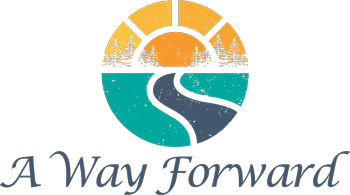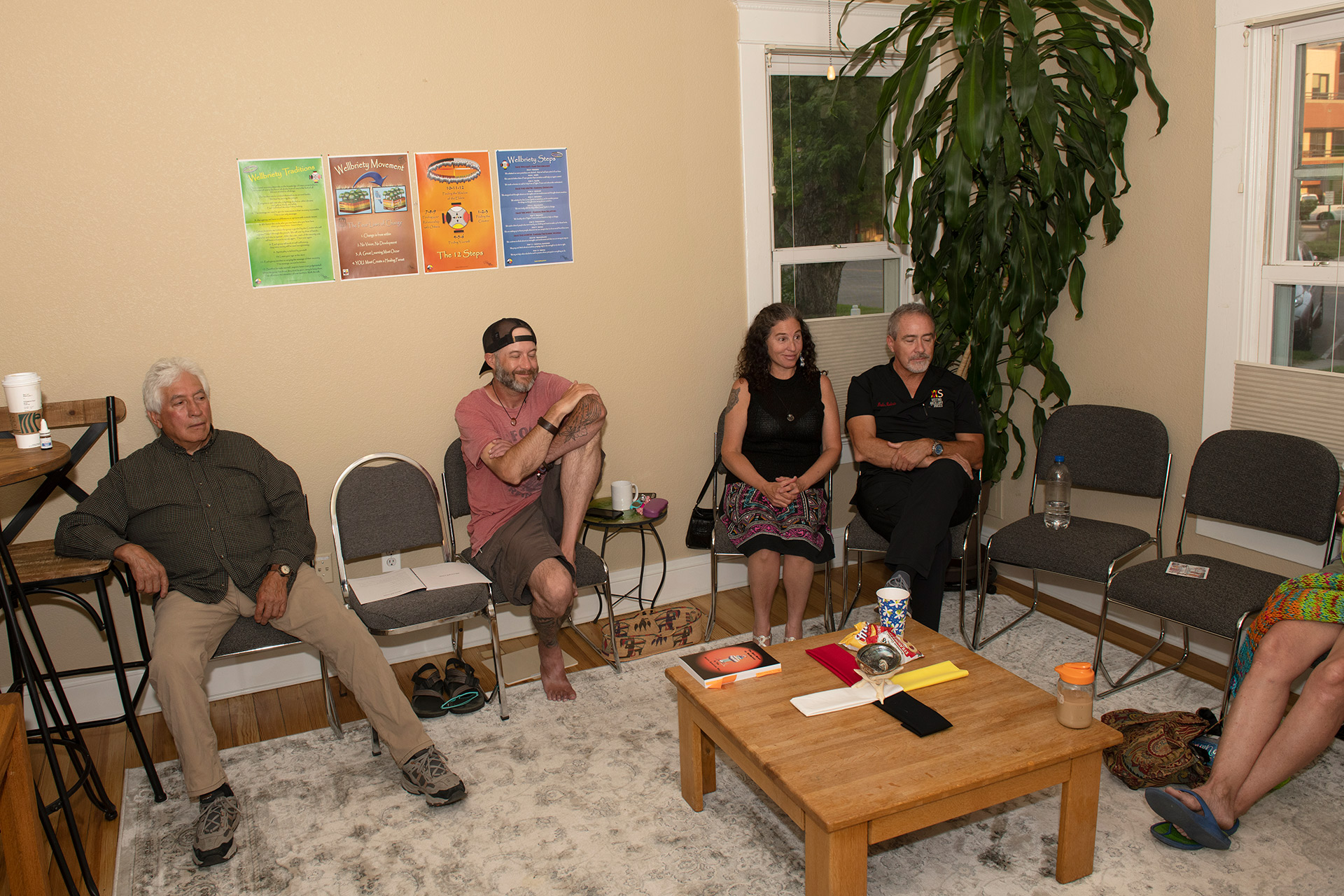Recovery Groups
AA
We are responsible to other alcoholics who wish to be sober.
In an increasing number of AA meetings today, groups recite the AA Responsibility Statement: “I am responsible. When anyone, anywhere, reaches out for help, I want the hand of AA always to be there. And for that: I am responsible.”
All our peer support workers understand “if you want to keep it you have to give it away.” In other words, if you want to keep your own sobriety, then you share your experience, strength and hope on the “road to happy destiny”.
The first 3 steps are the foundation of the AA program. Simplified they can be considered as follows:
Step 1: ”Do you see a connection between your own drinking or using, and the fact that your life has become unmanageable? Look, unmanageable is a five-syllable word for ‘out of control.’ Can you relate to ‘out of control?’ Yes? Then proceed.
As for being powerless, it’s the same concept. A few syllables that boil down to ‘When I drink alcohol or use drugs, things get out of control.’ If you can sympathize with that idea of being powerless, then congratulations, you’ve completed the first Step.”
Step 2: The basic idea of Step 2 is that we cannot ‘cure’ our own addictions.
“People in Twelve Step recovery don’t have a monopoly on sobriety. There are other methods of getting sober that work for other people. But what we have works for us, and if you stick with us, you might just find a solution that works for you too. While we admit we cannot ‘cure’ our addictions, we:
- “Came: We showed up to meetings.
- “Came to: We realized that we were living life in an unconscious fashion, not realizing how much damage we were doing to ourselves and others.
- “Came to believe: We saw that something outside of ourselves can help us, whether that ‘something’ happens to be a Higher Power (however we define it) or even the 12 Step program itself.”
Step 3: “The first edition of the Big Book has a story in which AA’s co-founder Bill Wilson says to a newcomer, ‘Your life is certainly jumbled up. Would you consider inviting God to help you unjumble it?’ Basically, that’s Step 3 in a nutshell. By accepting the spiritual help offered by a Higher Power, we embrace a spiritual program for arresting alcoholism and addiction. By letting a Higher Power ‘unjumble’ —to use Bill’s term—what we’ve managed to jumble, there’s a path ahead.
This approach still works for the old-timer, and it works for the newcomer, young and old. And that’s why everyone is responsible to everyone else, and in this way, sobriety is passed on from one person to the next.
LifeRing
LifeRing Secular Recovery, also known as LifeRing or LSR, is a secular program. If you’re someone who can live without the spiritual principles and the religious talk in recovery, then perhaps a more scientific orientation is your style.
LifeRing is a peer-run (similar to the Alcoholics Anonymous community) program for those who wish to recover from an addiction to drugs and/or alcohol. In other words, there are no “experts” in the room and there isn’t anyone who apparently knows more than anyone else. Just like in AA where everyone is following a particular program while supporting each other, the same is true for LifeRing.
What’s interesting about LifeRing is its emphasis to its members that they should experiment with a variety of approaches to maintaining abstinence. Members are encouraged to incorporate ideas from other recovery methods. Another noteworthy trait of LifeRing is its view on relapse. This group doesn’t see relapse as a life failure. Instead, once a relapse takes place, men and women are strongly advised to see that relapse as a learning experience. It’s a time to recommit to their sobriety. It’s a time to review their recovery and explore any needs that weren’t getting met.
The LifeRing philosophy is based upon the three principles. These are sobriety, secularity, and self-empowerment. Its participants aim for complete sobriety and abstinence.
One of the main principles of LifeRing is its attempt to strengthen the sober self in a person and weaken the addict self. One way they do this is to encourage their members to focus on their current lives rather than the hurts and painful experiences of the past. In fact, they point out that at local meetings, LifeRing members talk sober-self to sober-self, learning from each other and gaining strength in their connection.
LifeRing is also a program that can serve those who are in relationship with someone who is an addict or alcoholic. Similar to Al-Anon, LifeRing supports those whose loved one is an addict. It provides local support groups for men and women learning how to live with and love someone struggling with an addiction.
Red Road
The program uses the book “The Red Road to Sobriety in the Native American Way”, from Coyhis Publishing, Inc. The book is a sobriety, recovery and wellness book especially for Native Americans, written by Native Americans. This resource follows the teachings of the Native American Medicine Wheel and 12 Step Tradition.
From the book: “Time and again our Elders have said that the 12 Steps of AA are just the same as the principles that our ancestors lived by, with only one change. When we place the 12 Steps in a circle then they come into alignment with the circle teachings that we know from many of our tribal ways. When we think of them in a circle and use them a little differently, then the words will be more familiar to us. This book is about a Red Road, Medicine Wheel Journey to Wellbriety – to become sober and well in a Native American cultural way.”
The Red Road to Wellbriety is a book of healing that is culture-specific to Native Americans, but it may be used by all people. The book includes 12 chapters of cultural information about healing from alcoholism and addictions, including “how-to” information about working the 12 Steps in a Native way. The Red Road to Wellbriety also offers 17 personal recovery stories from Native Americans and others who have used Native culture or a Medicine Wheel and the 12 Steps approach to their own recovery from alcohol and other drugs.
The book also features chapters on healing from ACOA (Adult Children of Alcoholics) behavior, and co-dependency, as well as chapters on strengthening the family and community. The Red Road to Wellbriety is a stand-alone book or it may be used as a companion to White Bison’s Medicine Wheel and the 12 Steps programs for women and for men. It can also be used as a hands-on book for White Bison’s community-based Firestarter’s Healing and Wellbriety Programs.
Recovery Dharma
Recovery Dharma groups believe that the traditional Buddhist teachings, often referred to as the Dharma, offer a powerful approach to healing from addiction and living a life of true freedom. The program is based on the idea that every one of us is our own guide in recovery from addiction, with the help and understanding of our wise friends and sangha (community). We believe that’s what the Dharma teaches us.
The focus is on providing resources to local sanghas who wish to use Buddhist practices and principles for recovery. We believe that each of us must determine our path and practice for ourselves with the support of both local and global communities. There are many texts and teachers in the Buddhist tradition, and many opportunities to learn. Recovery Dharma is based on the idea of choice: that groups and individuals within those groups should be encouraged to explore, to learn, and to understand, following their own path and their own needs. We accept and honor the fact that there are many possible roads to the wise understanding and effort that are part of this practice. We are here to support that exploration, not to limit it.
Back to Basics a book by Wally P.
Discover the sheer simplicity of the early AA program that produced a 50-70% recovery rate from alcoholism. Experience the spiritual awakening that occurs as the direct result of taking the Twelve Steps in four one-hour sessions.
Wally P., is a recovered alcoholic/addict and the world’s foremost authority on A.A. and its’ success in the 1940’s. He has personally interviewed and tape recorded almost 200 of the original A.A. Members, all of whom recovered from the alcohol addiction in the 1940’s and 1950’s.
“Back-to-Basics is the Step-by-Step original Alcoholics Anonymous Beginners’ Meeting format that produced a 50% to 75% recovery rate from alcoholism during the 1940’s. These meetings were so successful that one of A.A.’s co-founders had this to say about them:
“Sobriety–freedom from alcohol–through the teaching and practice of the Twelve Steps is the sole purpose of an A.A. group. Groups have repeatedly tried other activities, and they have always failed…If we don’t stick to these principles, we shall almost surely collapse. And if we collapse, we cannot help anyone.”
Bill W., The A.A. Grapevine Inc., February 1958
The Back to Basics program continues to evolve. Based on what has been observed and/or described at the various Meetings and Groups throughout the world, Wally P. has seen a pattern emerge. The people who are most successful at “life changing,” i.e. taking newcomers through the Twelve Steps and witnessing the miracles, are those who have sharing partners, The Beginners’ Meetings were an integral part of the “original” A.A. recovery program. But, during those early days additional measures had to be implemented to achieve a 75 percent recovery rate, and we believe these same measures are necessary today. Each person who goes through the Back to Basics Beginners’ Meetings (either the one month or the one day program) is asked to share his or her Guidance with other person (a “sponsor,” spiritual advisor or sharing partner) every day. This practice is part of a daily Eleventh Step, which is essential for maintaining long-term, contented sobriety.
Call
(303) 630-1400
Location
600 Terry Street
Longmont, CO 80501
info@awflongmont.org


